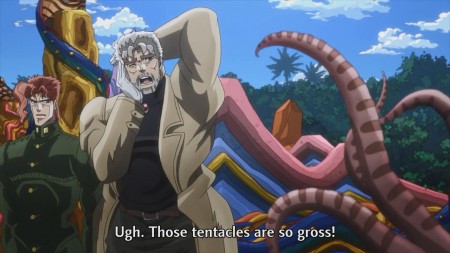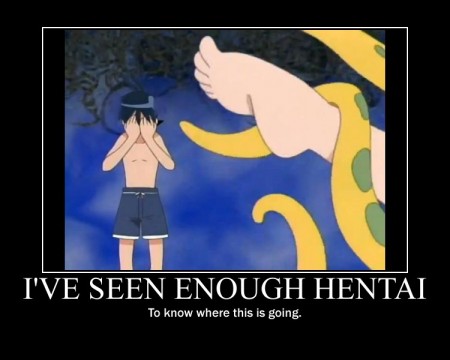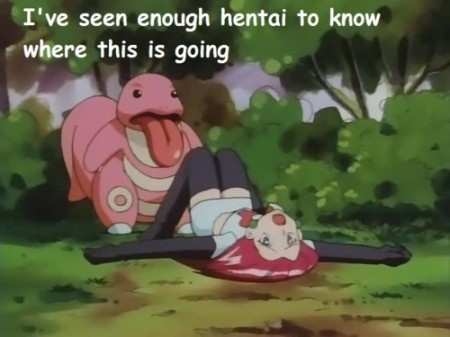Ask John: Why Does Extreme Hentai Exist?
Question:
In response to last week’s response, who on earth is the target audience for these disgusting hentais which feature gratuitous rape, violence and trauma and why do they watch it? Do they just have a “gawkers at a train wreck” mentality to them? And why on earth would someone go to the trouble of animating something so incredibly foul, rancid, immoral and disgusting?
Answer:
With the exception of people of unusually optimistic and personable character, all humans periodically feel jilted, angry, morose, or vindictive. Normal, socially responsible individuals cope with these feelings and sublimate them in order to not manifest antisocial behavior. Furthermore, particularly in modern industrialized societies, constant exposure to social and media depictions of extreme human behavior, including violence, love, and foolishness, tend to desensitize individuals. As a result of such desensitization, even appalling behavior, for example, the idiotic humor exhibited in a motion picture like Dumb & Dumber To, elicits only a tepid viewer reaction instead of tremendous shock. In order to combat this sense of steadily creeping ennui, certain viewers choose to occasionally submit themselves to fiction that manages to overpower lassitude. Furthermore, some viewers simply do appreciate a vicarious excitement by seeing extreme depravity.
Extreme content in adult anime isn’t a cinematic content limited to Japan. The modern “torture porn” cinematic sub-genre started in America with the 2004 movie Saw before spreading worldwide with films like The Butcher (2007, Korea), Martyrs (2008, France), Grotesque (2009, Japan), and The Loved Ones (2009, Australia). Japanese cinema has included intense, gruesome, and particularly fetishistic violence dating at least back to 1968’s The Joy of Torture (Tokugawa Onna Keibatsu-shi), if not even farther back to 1960’s classic Japanese horror film Jigoku.
Japan is a society that demands a more rigid decorum of public behavior than Americans are used to. Japanese society discourages public exhibitions of personal expression while American society encourages individuals to express themselves. In contrast, however, Japanese society allows, if not encourages, a greater range of personal expression through fiction than America typically tolerates. America largely prohibits depictions of simulated rape, child pornography, and bestiality in order to maintain a minimum standard of social morality. Japan, on the other hand, relies less on legal and governmental regulation to enforce morality and more on familial and social etiquette to maintain moral standards. Arguably Japanese teachers and schools teaching and demanding proper social behavior is more effective than American laws prohibiting antisocial behavior and the moral majority imposing arbitrary regulation to “protect impressionable children” considering that as of 2012 the United States’ per capita murder rate was 4.7 while Japan’s was 0.3.
While America discourages and legally prohibits depiction of “obscenity,” Japan largely doesn’t, encouraging the idea that Japanese citizens who feel repressed, distressed, angry, or antisocial defuse their anxieties through fiction rather than behavior. The unfettered opportunity to create intensely gruesome fiction is a steam valve that allows Japanese creators to fully express their imagination and allows consumers to relive their stress through non-harmful vicarious consumption. Even in America, horror and underground fans enjoy grotesque, exploitive horror films like The Human Centipede 2, August Underground, Cannibal Holocaust, and Slaughtered Vomit Dolls because these films evoke a strong reaction. When television programming and mainstream Hollywood spectacle films evoke a mere yawn, some viewers are drawn to content that can still cause a strong, nearly physical reaction. Today’s consumers have become so inured to average depictions of human behavior that only the most gratuitous and extreme illustrations still have the power and ability to significantly stimulate.
Manga artist Waita Uziga is infamous for manga depicting sex involving dismemberment. Manga artist Juan Goto has drawn doujinshi combining sex with ritual suicide. Manga artists including Z-Ton and Horitomo draw humans coupling with “monster girls.” Artists including MASSIRO, Medaka Ken’ichi, and Serizawa Yuji draw “toddler-con” erotic manga involving girl children still in diapers. All of these concepts may seem repulsive and even criminal to average Americans. But to Japanese creators and readers, this material is simply fiction intended to stimulate adults in a harmless and private way. Considering Japan’s very low frequency of violent crime, obviously most creators and consumers of this type of material are rational individuals that responsibly “enjoy” this material strictly as extreme content that evokes a strong visceral reaction. Arguably, Japanese society allowing its citizens to unabashedly explore and exhibit their most sadistic, perverted, and debauched thoughts and fantasies promotes a cathartic cleansing of the psyche, and consumers around the world appreciate this sort of twisted material because it provides a vicarious satisfaction, satisfies a morbid curiosity, and alleviates feelings of vindictive hostility in a safe, restrained, private method.




